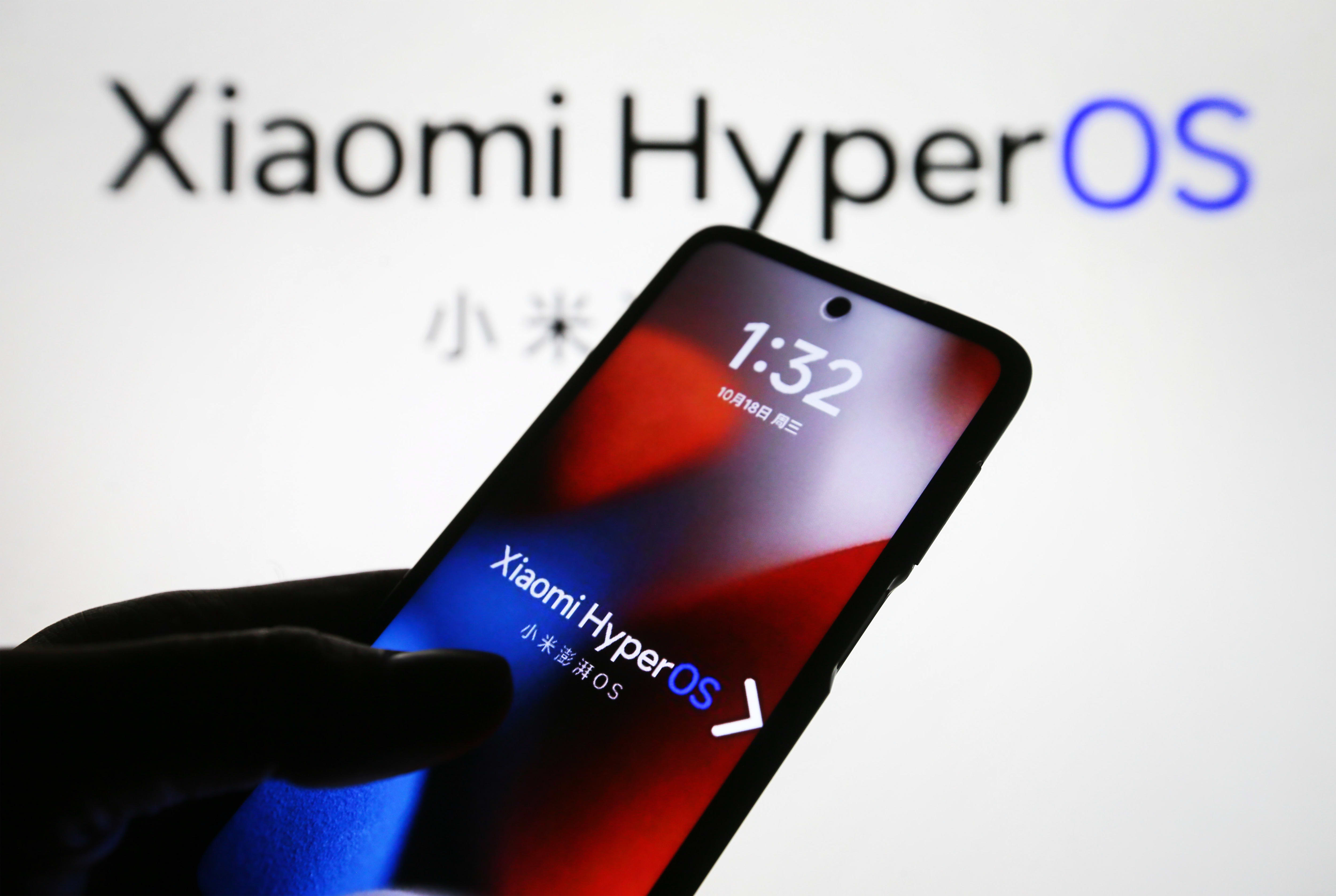
- Chinese smartphone and home appliance maker Xiaomi late Thursday announced a new operating system, as it seeks to grow its ecosystem with the imminent release of its own car.
- Xiaomi will launch its car in the first half of next year, CEO and founder Lei Jun said on Chinese social media on Wednesday. He did not specify whether it would be electric.
- Chinese electric car company Nio this fall also released its own smartphone, based on Android but intended for greater integration with its vehicles.
The Xiaomi HyperOS logo is displayed on the smartphone.
soba pictures | Rocket Lite | Getty Images
BEIJING — Chinese smartphone and home appliance maker Xiaomi late Thursday announced a new operating system — as it seeks to grow its ecosystem with the imminent release of its own car.
Xiaomi shares rose more than 1% in Hong Kong trading on Friday morning, building on gains of more than 20% for the year so far.
The new system, called HyperOS, is scheduled to reach consumers on October 31 when sales of Xiaomi’s latest phones, wearables and TVs begin in China.
“The system represents a pivotal step forward in Xiaomi’s strategic vision to deliver the Human x Car x Home intelligent ecosystem,” the company said in a statement.
CEO and founder Lei Jun said on Chinese social media on Wednesday that Xiaomi will launch its car in the first half of next year. He did not specify whether it would be electric.
Technology companies have long sought to build customer loyalty through operating systems, such as Apple’s iOS and Google’s Android.
Chinese telecom giant Huawei has developed its own operating system, called HarmonyOS, in a bid to replace Android. The company makes its own range of smartphones, laptops, tablets and TVs, while selling software for electric cars made by partners.
In late September, Huawei claimed that the latest version of its operating system had surpassed 60 million users. Overall, Huawei claims that HarmonyOS is now running on more than 700 million devices.
Chinese electric car company Nio this fall also released its own smartphone, based on Android but intended for greater integration with its vehicles.
Xiaomi is known for its affordable smartphones and its MIUI user interface, which is built on the open source Android platform.
The core of its new HyperOS system “is shaped by the self-developed Linux and Xiaomi Vela,” the company said. The only mention in the Android press release was that HyperOS allows for “more stable frame rates and lower power consumption” compared to the stock Android version.
Xiaomi also touted the processing speed and security of HyperOS, and listed a number of ways a smartphone, car and laptop can easily share content and access each other’s cameras on the new system.
In recent years, Xiaomi has grown its hardware and consumer electronics business to account for about 22% of total revenue in the second quarter, versus just under 37% for smartphones.
On Thursday, the company released a 3,999 yuan ($546) smartphone as well as a 1,999 yuan washing machine and a 2,999 yuan refrigerator. Xiaomi has an app to allow customers to control device settings remotely.
Correction: This story has been updated to reflect that in late September, Huawei claimed that the latest version of its operating system had surpassed 60 million users.

“Certified food guru. Internet maven. Bacon junkie. Tv enthusiast. Avid writer. Gamer. Beeraholic.”

:quality(85)/cloudfront-us-east-1.images.arcpublishing.com/infobae/5UO63CBHEMLEHSVUAGLCAHP2Q4.jpg)



More Stories
Take-Two is reportedly shutting down OlliOlli and Kerbal Space 2 Devs
The Microsoft OpenAI partnership was born out of Google envy
Emails revealed that Microsoft's $1 billion investment in OpenAI was due to Google's concerns